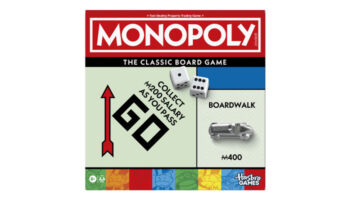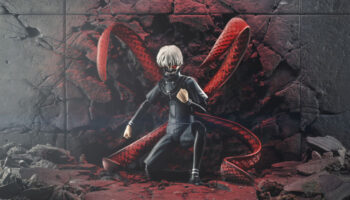Licensing vs Self Publishing

GPI’s David Blanchard speaks with All Things Equal’s Eric Poses, Doozy Games’ David Stone and Eric Olsen, the inventor of Big G Creative’s Glyphics, about how best to get a game concept off the ground and onto shelves…
David Blanchard, VP of Business Development, GPI: Guys, I’m delighted to have you here to talk about the self publishing versus licensing debate. To kick us off, let’s do introductions…
Eric Poses, Owner, All Things Equal: I’m Eric Poses and I got into the games business 26 years ago with my first game idea, Loaded Questions. I didn’t know anyone in the industry, and knew nothing about the industry really. I had this idea that I loved, I mocked up a prototype, had friends and family over to play it and felt like a had a winner… I’d realised my calling in life! I called on toy and game stores and looked up people in the Yellow Pages, but found myself getting nowhere – and yet I still loved this Loaded Questions concept.
I decided to produce 5,000 copies domestically. During that time, I was getting no bites from calling toy and game stores, so I decided I needed to meet these people. I had to physically show them this game… So I drove around the country for 16 weeks with copies of Loaded Questions in the trunk of my car, demoing it at different toy stores.

In that first year, I sold about 1,000 games and got the game a trial at Toys R Us because the assistant buyer at Toys R Us had bought the game at a New Jersey store. Meanwhile, my dental hygienist’s cousin had a cousin on the other side of her family who was a merchandising manager at Toys R Us. That guy met with me and recommended a meeting with the buyer at Toys R Us. Thankfully she placed the game. That got the ball rolling for me and I still run a one-man game company.
Eric Olsen, Designer of Glyphics: There’s lots of similarities with my story, except Eric started when he was half my age! I’ve played games my entire life, but it never occurred to me to make my own game. Two years ago, I organically came up with the idea for Glyphics – think Pictionary with pieces. It was inspired by the mess on my kitchen table! I played with friends and family and thought it was a great concept.
I didn’t know anybody in the industry, but I sent an email to the info@bananagrams account and they got back to me. I met Rena, she put me onto someone who then put me onto the folks at GPI. David, you then helped me place Glyphics at Big G Creative. In the last year and a half, I have four new game concepts that are finished and five more that are partially finished. I’m now still having the self-publishing or licensing debate. It’s still a live conversation for me.

Eric Poses: To your point, I had the benefit of starting when I was 23. I didn’t have a mortgage or a family at the time, so that was an advantage. Self-publishing is a much tougher decision in your mid-forties.
David Blanchard: That’s a perfect way to tee up David Stone!
David Stone, Chief Dice Officer, Doozy Games: Yeah! Like you guys, games weren’t even a glint in my eye, ever! During Covid, we were playing Yahtzee. Afterwards, the kids bolted to their rooms to play computer games but I stayed playing with the dice. I couldn’t stop thinking about the fact I hadn’t seen any major improvement to Yahtzee in 60 years!
I started talking to my family about flipping Yahtzee on its head. What if you have to roll every combination, and not stop rolling until you get every combination? We thought that would be a real doozy, and the word ‘doozy’ got stuck in my brain. I created a really bad version of what would become Doozy Dice.
I started doing research and came across an interview with Kevin Carroll, the co-designer of TENZI. I emailed Kevin and he was very kind with his time. He told me he wasn’t sure about Doozy Dice, so he connected me with GPI. David, you then jumped on a call with me and said “I have to be honest with you, it’s not good!” I said: “What’s wrong?” You said: “It’s chance-based, it takes too long and there’s no interaction.” I said: “Other than that, what do you think?!”
But in all seriousness, we went back, completely changed it, did some great artwork and launched Doozy Dice in August 2022 on amazon. To date, we’ve sold 8,500 copies. We’ve got a drinking version – Boozy Dice – and a card game in the pipeline too.
I will say though, self-publishing is expensive.
Eric Olsen: That’s the real conundrum for me. I spoke to an inventor a while ago that sells her card games exclusively via amazon and she’s been going for around six years. She is going to hit 500,000 units this year. A couple of my games concepts are card games, and even if it goes to a dream publisher – like a Mattel – would I make as much as if I self-publish? If I license, I’m making maybe 25¢ game. If I self-publish, I could make $4 to $6 a game… Then you look at how many units you need to do. 20,000 units does not seem like that many units…

Eric Poses: It is! You’d hope to do that many, but I’ve had many games that I think are winners that I end up struggling to move through that first run of 10,000 games. There’s lots of examples of that throughout the games industry. It’s a real conundrum.
David Stone: It’s a huge conundrum. I think my advantage is having a career in sales and understanding long sales cycles. You have to be willing to go all in. In my opinion, self-publishing is the only way to go. No-one is going to love your game more than you. No-one loves Doozy Dice as much as I do. I couldn’t stand it if a publisher took Doozy Dice and then cast it off to the side or didn’t treat it right. I’m too much of a control freak!
Eric Poses: I’m the same.
Eric Olsen: It was very hard for me to turn Glyphics over. David, you told me that typically the publisher has full creative control and I didn’t like that at all! They don’t know the hundreds of hours that I’ve put into the game. They might make decisions having played the game five times! But on the other hand, self-publishing a card game is a different proposition to self-publishing something like Glyphics. That would be a hefty investment.
Eric Poses: That’s a good point. Maybe start with a 2,500 unit run of less expensive card game. Get your feet wet.
David Stone: A big factor is what channel you’re going to go through. We did some PPC advertising on amazon and it usually takes four to six months to break even. You have to outlay that, but fortunately for us, we were selling more than what our ads were costing us.
Eric Poses: When I started, there wasn’t amazon. There were speciality stores and they were good options to help your bottom line. Thankfully I got a lot of our titles onto amazon early and that helped establish them as brands.
Eric Olsen: Lots of people do the toy fairs, connect with buyers, find distributors and find their way via that route. So there’s self-publishing where you do that, and there’s self-publishing where you do it all from your living room with amazon… The latter seems like a nice possibility.
Eric Poses: For me, doing a trade show is very important – especially when you’re just starting out. It’s an investment, but it’s a great way to meet a lot of people in the industry. I only go to a few a year, so I’m more of a living room guy, but I’d recommend trade shows to anyone starting out. You get a sense of the industry and you get to meet people.
David Blanchard: It’s funny, at the start of the conversation, Eric Poses and David were in awe at Eric Olsen’s ability to license Glyphics, because you guys felt a need to be in control. But, at some point, you have to relinquish that control even if you self-publish… For example, you don’t have control over the sales rep that’s pitching your game to stores. I remember back in my Haywire days, going with a sales rep on some calls and being mortified with their approach to selling our games.
Eric Poses: I’ve experienced that too. I think you’ll always do the best job of selling your own game. That’s why I always lobby to join meetings with reps.
David Blanchard: A common thread seems to be a willingness to take control and take a chance. Eric, you reached out to Bananagrams and it resulted in a licensing deal with Big G. It’s the same with David reaching out to TENZI. Eric, you had to go on the road and sell stuff out of your car. What advice would you give someone looking to start a games company today?
Eric Poses: I’m always amazed at how many inventors show me game concepts that I soon discover already exist. My advice would be to see what’s out there and talk to as many people as possible. Go to a trade show. That’s how I got started. I spoke to anybody that would talk to me.
Eric Olsen: My advice would be that if you believe in your game, playtest the heck out of it. Try it with different groups and don’t be afraid of feedback. And to Eric’s point, don’t be afraid to reach out to people.
David Stone: Mine is that you really have to want to do this to do this. You can’t half ass it. You gotta go all in. And don’t be afraid to find help. How are you going to get people to purchase your game? Amazon brings billions of people to one location – it’s insane not to leverage that. It’s a lot of work, but it’s worth it.
David Blanchard: Guys, this has been great. Thank you for taking the time.
–
To stay in the loop with the latest news, interviews and features from the world of toy and game design, sign up to our weekly newsletter here






















